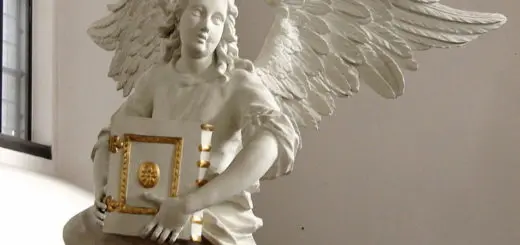Fairies: Magical Beings Linked to Nature

Looking for more amazing products? Check out our online store and explore our collection here! Happy shopping!
Before diving in, please note: This post is for informational purposes only. If you’d like to know more about how we approach topics, feel free to check out our friendly Disclaimer Page.
Hey there, amazing readers! 
We’re committed to delivering quality posts, and your support (even just sticking around despite the ads) means everything to us. So, bear with us, and thanks for helping us keep the good vibes rolling. Now, on to the fun stuff!
TRANSLATE BUTTON AT THE END OF THE ARTICLE
Introduction
Fairies have enchanted human imagination for centuries, captivating us with their whimsical and mysterious nature.
These magical beings, often associated with natural elements, folklore, and mythology, are believed to inhabit forests, streams, and gardens, acting as guardians of nature or playful tricksters.
From the Celtic myths of Ireland to the enchanting tales of Shakespeare, fairies are depicted in various forms and roles, embodying the essence of nature’s magic.
In this comprehensive exploration, we delve into the origins, types, and cultural significance of fairies, uncovering the fascinating connections between these mythical creatures and the natural world.
Origins of Fairies in Mythology
Celtic Roots
Fairies have strong ties to Celtic mythology, where they are often depicted as supernatural beings linked to the natural world:
The Tuatha Dé Danann: In Irish mythology, the Tuatha Dé Danann were a race of god-like beings with magical powers, considered ancestors of modern fairies.
After being defeated by humans, they retreated to the underworld, becoming known as the “Aos Sí” or “people of the mounds.”
Fairy Hills and Mounds: According to Celtic belief, fairies live in hills or mounds known as “sidhe.” These places are considered portals to their hidden realms, where they reside in harmony with nature.
European Folklore
Throughout Europe, fairies appear in various folklore traditions, each with unique characteristics:
Germanic and Scandinavian Traditions: In these regions, fairies, known as “elves,” are often connected to natural elements and possess both benevolent and malevolent traits, acting as protectors or tricksters depending on their mood.
British and French Legends: Fairies in these cultures are frequently depicted as small, winged beings living in close relationship with flowers, forests, and streams, playing a significant role in local folklore and fairy tales.
Types of Fairies
Nature Spirits
Fairies are commonly associated with natural elements, embodying different aspects of the environment:
Tree Spirits (Dryads): Often found in Greek mythology, dryads are tree nymphs who protect forests and woodlands, embodying the spirit of the trees they inhabit.
Water Fairies (Naiads and Nereids): These fairies are linked to bodies of water like rivers, lakes, and seas.
Naiads are freshwater spirits, while Nereids are sea nymphs, often depicted as beautiful maidens who guide sailors or protect aquatic life.
Tricksters and Mischief-Makers
Some fairies are known for their playful, mischievous nature, often causing trouble for humans:
Pixies: Originating from Cornish folklore, pixies are small, impish fairies known for their playful antics, leading travelers astray or stealing small objects.
Puck: A famous character from Shakespeare’s “A Midsummer Night’s Dream,” Puck represents the trickster side of fairy lore, known for causing mayhem and mischief among mortals.
Fairies in Literature and Popular Culture
Shakespearean Influence
William Shakespeare’s works, particularly “A Midsummer Night’s Dream,” have heavily influenced modern perceptions of fairies:
Titania and Oberon: The fairy queen and king in the play, represent the magical, ethereal nature of fairies, intertwined with themes of love and power.
Fairy Folklore: Shakespeare’s depiction of fairies blends traditional folklore with creative storytelling, shaping how we envision fairies today as whimsical, magical beings.
Modern Interpretations
Fairies continue to enchant audiences in contemporary literature and media:
Fantasy Novels: Series like “The Spiderwick Chronicles” and “Artemis Fowl” feature fairies as central characters, often blending traditional folklore with modern fantasy elements.
Children’s Stories: Fairies are frequently depicted in children’s books and films, such as Disney’s “Tinker Bell” series, which portrays them as small, winged creatures with magical abilities linked to nature.
The Role of Fairies in Nature
Guardians of the Natural World
Fairies are often seen as protectors of nature, embodying its beauty and fragility:
Environmental Stewards: Folklore suggests that fairies maintain the balance of nature, ensuring that forests, rivers, and other natural elements thrive.
Protective Spirits: Many cultures believe fairies punish those who harm the environment, reinforcing the idea that humans should respect and care for nature.
Symbolism in Flora and Fauna
Fairies are closely associated with specific plants and animals, each holding symbolic meanings:
Fairy Rings: These naturally occurring rings of mushrooms in forests and fields are often believed to be sites where fairies dance, representing their presence in the natural world.
Connect with Angels, Guides, and Master Teachers – begin here.

Flowers and Plants: Certain flowers, like foxgloves and bluebells, are thought to be favored by fairies, and folklore often warns against picking them to avoid offending these magical beings.
Fairies and Human Interaction
Tales of Caution and Morality
Fairy stories often serve as cautionary tales, teaching moral lessons:
Respect for Nature: Many fairy tales emphasize the importance of respecting nature and its inhabitants, warning of the consequences of greed, pride, or carelessness.
Moral Integrity: Stories featuring fairies frequently highlight themes of honesty, kindness, and humility, with fairies rewarding virtuous behavior and punishing wrongdoing.
Superstitions and Beliefs
Across cultures, various superstitions and beliefs surround fairies and their interaction with humans:
Offerings and Gifts: It is common in folklore to leave offerings, such as milk or bread, for fairies to gain their favor or protection.
Fairy Paths: In some traditions, building on or blocking a fairy path, believed to be a route used by fairies, is thought to bring misfortune or invite retribution from these spirits.
Fairies in Rituals and Festivals
Fairy Celebrations
Many cultures have rituals and festivals celebrating fairies and their connection to nature:
Midsummer Festivals: Celebrations like the Summer Solstice or Midsummer’s Eve often involve rituals that honor fairies, such as dancing around bonfires or leaving offerings.
Beltane: An ancient Celtic festival marking the beginning of summer, Beltane includes traditions that celebrate the presence of fairies and other nature spirits, promoting fertility and growth.
Seasonal Connections
Fairies are often linked to specific seasons and natural cycles:
Spring and Rebirth: Fairies are commonly associated with spring, a time of renewal and growth, reflecting their connection to life and nature’s cycles.
Autumn and Harvest: As guardians of nature, fairies are also connected to the harvest season, symbolizing the balance between nature’s bounty and the need for its preservation.
The Evolution of Fairy Beliefs
From Pagan Roots to Modern Times
Fairy beliefs have evolved from ancient pagan traditions to contemporary interpretations:
Christian Influence: During the Middle Ages, Christian theology often depicted fairies as fallen angels or demonic entities, blending older pagan beliefs with religious narratives.
Romanticism and Revival: The 19th century saw a resurgence of interest in fairies, particularly in art and literature, as part of a broader Romantic movement that idealized nature and the supernatural.
The New Age Movement
In modern times, fairies have found a place in the New Age movement:
Spiritual Guides: Many New Age practitioners view fairies as spiritual guides or energy beings that can assist in healing and connecting with nature.
Fairy Gardens: Creating fairy gardens, small outdoor spaces designed to attract and honor fairies, has become a popular practice, blending gardening with magical and spiritual beliefs.
The Science Behind Fairy Sightings
Psychological Explanations
There are several psychological theories behind fairy sightings and experiences:
Pareidolia: The human tendency to perceive familiar patterns, like faces, in random stimuli, may explain some fairy sightings, particularly in nature.
Cultural Influence: Stories of fairies passed down through generations can shape perceptions and experiences, leading people to interpret natural phenomena as fairy encounters.
Environmental Factors
Certain environmental conditions may also contribute to reports of fairy sightings:
Natural Hallucinogens: Some fairy sightings are believed to be linked to the consumption of natural hallucinogens, such as those found in certain mushrooms.
Environmental Sounds and Lights: Natural phenomena, such as mist, fog, or bioluminescent organisms, might be mistaken for fairy lights or figures in the right conditions.
Fairy Art and Imagery
Historical Depictions
Fairies have been a popular subject in art throughout history:
Medieval Manuscripts: Early depictions of fairies in illuminated manuscripts often show them as small, winged beings interacting with nature and humans.
Victorian Art: The Victorian era saw a surge in fairy art, with artists like Richard Dadd and John Anster Fitzgerald creating detailed paintings that captured the whimsical and mysterious nature of fairies.
Modern Representations
Fairies continue to inspire artists in the modern era:
Fantasy Illustration: Contemporary fantasy artists often depict fairies in vibrant, colorful scenes that emphasize their magical connection to nature.
Popular Media: Fairies are frequently featured in films, television shows, and video games, reflecting their enduring appeal and versatility as magical beings.
Fairies in Different Cultures
Asian Folklore
Fairy-like beings also appear in Asian folklore, though they are often distinct from Western fairies:
Chinese Hsien: In Chinese mythology, the Hsien are immortal beings associated with nature, often depicted as beautiful, eth
ereal women who dwell in secluded forests or mountains.
Japanese Yokai: Some Yokai, or supernatural creatures in Japanese folklore, share similarities with fairies, such as their connection to natural elements and their mischievous or protective behavior.
African and Indigenous Legends
Fairy-like creatures can also be found in African and Indigenous legends:
Tokoloshe: In South African folklore, the Tokoloshe is a small, mischievous spirit that can cause trouble for humans, similar to the trickster fairies of European lore.
Nature Spirits: Many Indigenous cultures worldwide have stories of nature spirits or small beings that protect the environment, guiding or challenging humans who interact with the natural world.
Conclusion
Fairies, as magical beings linked to nature, continue to captivate our imagination and enrich our cultural heritage.
Whether seen as guardians of the natural world, playful tricksters, or mysterious spirits, fairies embody the enchantment and wonder of the natural world.
Their enduring presence in folklore, literature, and popular culture reflects our deep-rooted connection to nature and our fascination with the mystical.
As we explore the world of fairies, we are reminded of the magic and beauty that surrounds us, encouraging us to appreciate and protect the natural world.

The Enlightenment Journey is a remarkable collection of writings authored by a distinguished group of experts in the fields of spirituality, new age, and esoteric knowledge.
This anthology features a diverse assembly of well-experienced authors who bring their profound insights and credible perspectives to the forefront.
Each contributor possesses a wealth of knowledge and wisdom, making them authorities in their respective domains.
Together, they offer readers a transformative journey into the realms of spiritual growth, self-discovery, and esoteric enlightenment.
The Enlightenment Journey is a testament to the collective expertise of these luminaries, providing readers with a rich tapestry of ideas and information to illuminate their spiritual path.
Our Diverse Expertise
While our primary focus is on spirituality and esotericism, we are equally passionate about exploring a wide range of other topics and niches 

To ensure we provide the most accurate and valuable insights, we collaborate with trusted experts in their respective domains 
Our blog originally focused on spirituality and metaphysics, but we’ve since expanded to cover a wide range of niches. Don’t worry—we continue to publish a lot of articles on spirituality! Frequently visit our blog to explore our diverse content and stay tuned for more insightful reads.
Hey there, amazing reader! 
Check out our store here and take a peek at some of our featured products below! Thanks for being awesome!












